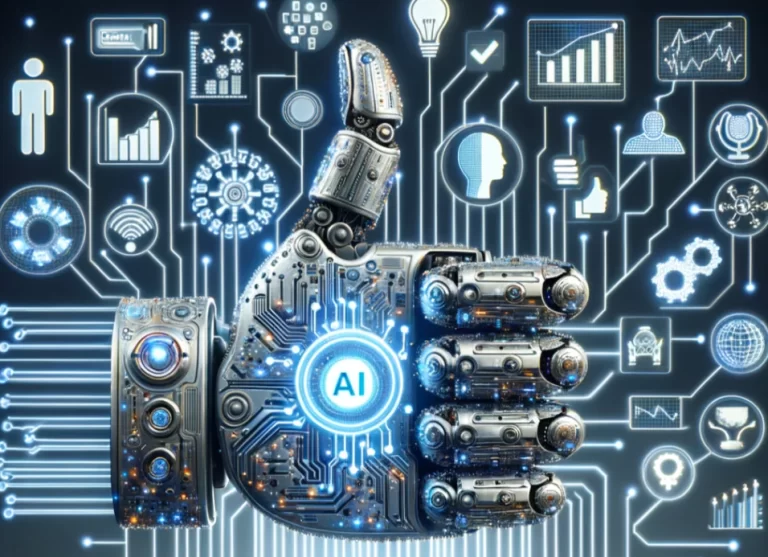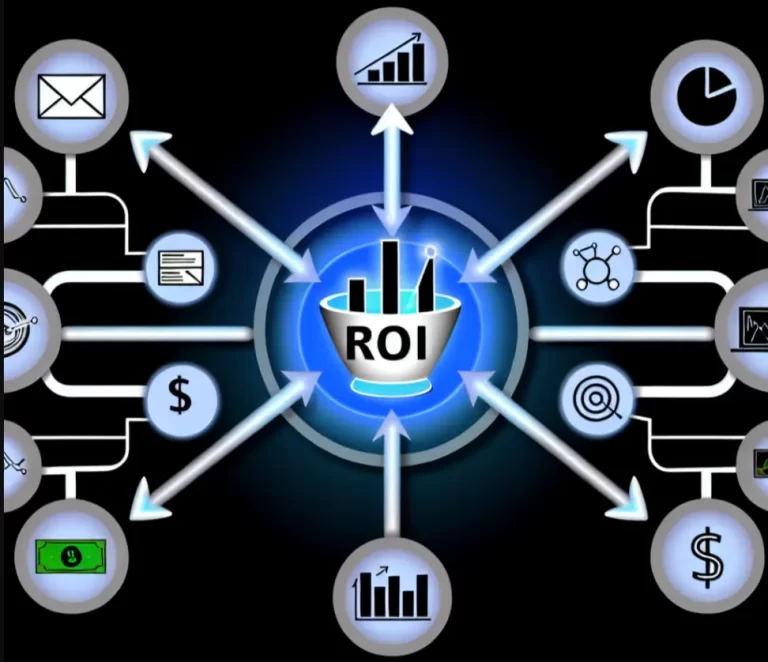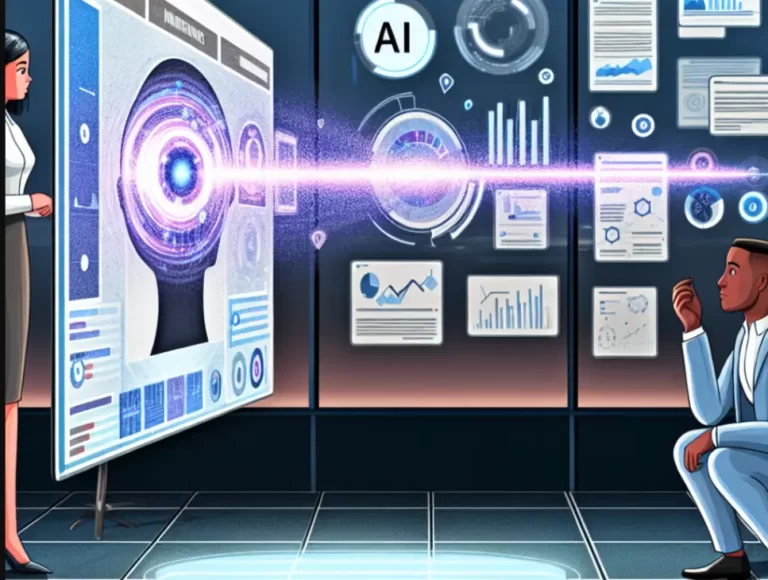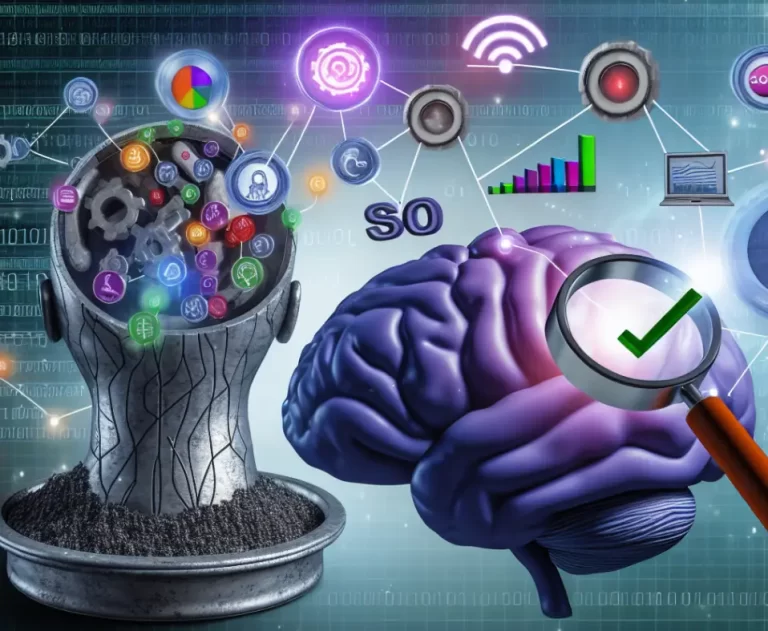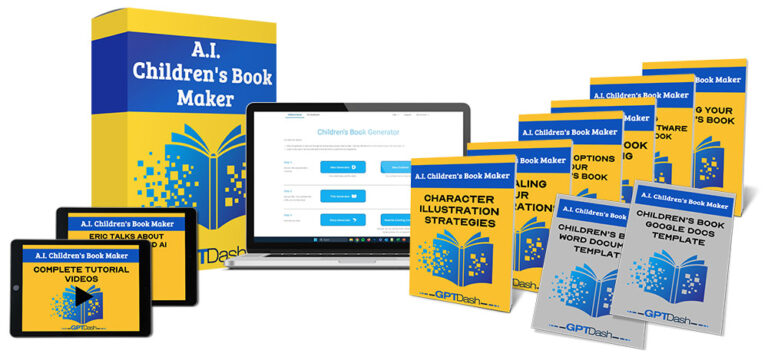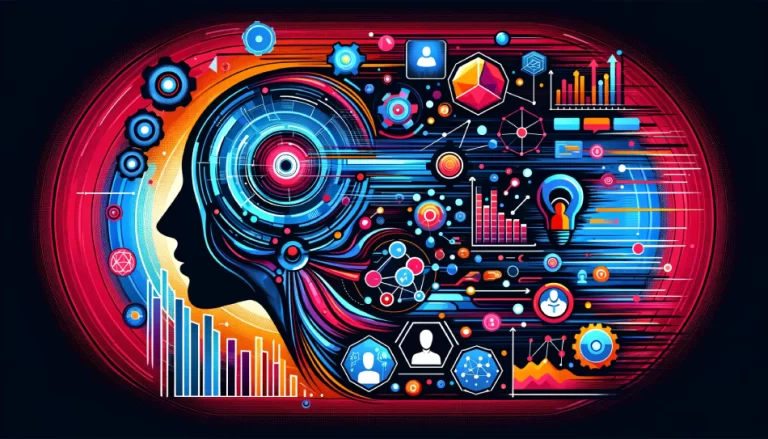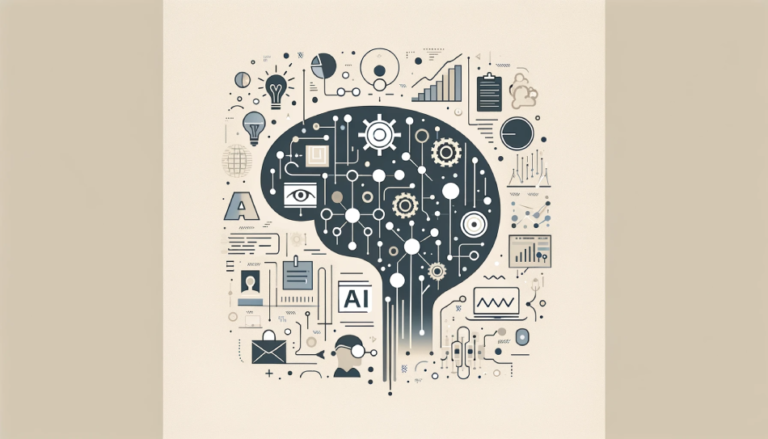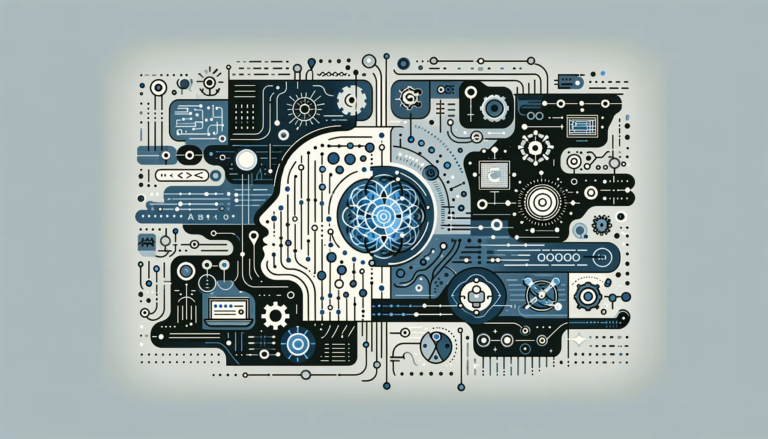AI and Big Data in Marketing
Artificial Intelligence (AI) and Big Data have become buzzwords in the marketing landscape, and for good reason. These two technological marvels have revolutionized how businesses understand and interact with their customers. In a world where data is proliferating at an astonishing rate, leveraging AI and Big Data is not just advantageous; it’s essential for staying competitive.
So, what exactly are AI and Big Data? Let’s break them down a bit.
### Understanding AI and Big Data
**Artificial Intelligence** refers to the capability of machines to mimic human intelligence. Think of AI as a smart assistant that can learn, reason, and solve problems. From chatbots that provide instant customer service to algorithms that recommend products you might like, AI is transforming how businesses operate.
On the other hand, **Big Data** is all about the vast volumes of data generated every second. This includes everything from customer transactions and social media interactions to sensor data from IoT devices. The challenge isn’t just collecting this data but analyzing it to extract meaningful insights.
### Why AI and Big Data Matter in Marketing
The marriage of AI and Big Data holds immense potential for marketers. Imagine having a crystal ball that can tell you what your customers want before they even know it themselves. That’s the power of AI and Big Data combined.
#### Real-World Application
Take Netflix, for example. The streaming giant uses AI to analyze vast amounts of data on viewing habits. This allows Netflix to make incredibly accurate recommendations, keeping viewers hooked and coming back for more. Similarly, Amazon uses AI to analyze purchase history and browsing behavior, offering personalized recommendations that drive sales.
### Benefits of AI and Big Data in Marketing
Here are a few ways AI and Big Data can supercharge your marketing efforts:
- Enhanced Decision Making: With AI analyzing Big Data, marketers can make data-driven decisions with greater confidence. This reduces guesswork and increases the likelihood of successful campaigns.
- Personalized Customer Experiences: AI helps in creating hyper-personalized experiences, ensuring that each customer feels unique and valued. This can lead to higher customer satisfaction and loyalty.
- Optimized Resource Allocation: By understanding what works and what doesn’t, businesses can allocate their resources more efficiently. This means better ROI on marketing spend.
### Getting Started
If you’re thinking about integrating AI and Big Data into your marketing strategy, start small. Begin by identifying specific areas where these technologies can add value. Whether it’s improving customer segmentation or enhancing your email marketing campaigns, there’s no need to overhaul your entire strategy overnight.
Invest in **training and education** for your team. The more they understand these technologies, the more effectively they can leverage them. Tools like Google Analytics, IBM Watson, and various CRM platforms offer features that harness the power of AI and Big Data.
### Final Thoughts
AI and Big Data aren’t just the future of marketing; they’re the present. By embracing these technologies now, you position your business to not only meet current customer expectations but also anticipate and shape future trends. The journey into AI and Big Data might seem daunting, but the rewards are well worth the effort.
So, are you ready to transform your marketing strategy with AI and Big Data? The opportunities are endless, and the only limit is your imagination.
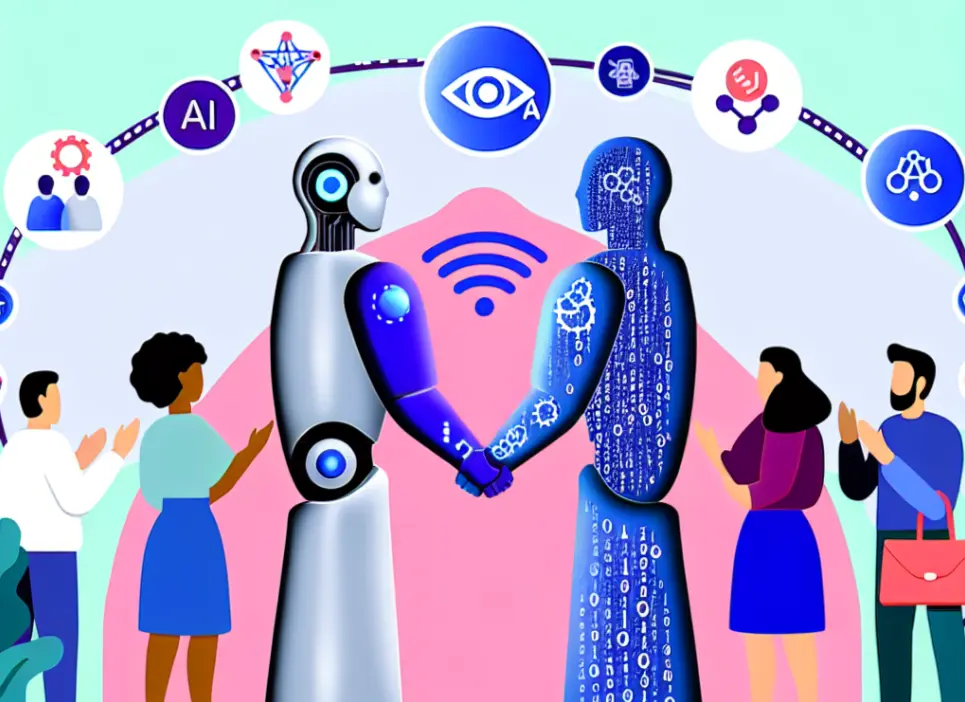
Understanding the Synergy Between AI and Big Data
In today’s digital landscape, the buzz around Artificial Intelligence (AI) and Big Data isn’t just noise; it’s a harmonious symphony that’s revolutionizing marketing. But what exactly is the synergy between these two technological titans? Let’s dive in and explore how they complement each other to create magic in the marketing world.
The Power Couple of Modern Marketing
Imagine AI as a master chef and Big Data as the vast array of ingredients available to them. Separately, they each have tremendous potential. But together, they create culinary masterpieces—transforming raw data into insightful, actionable intelligence that can drive marketing strategies to new heights.
AI: The Brain Behind the Operation
AI’s role in this partnership is to process and analyze the mountains of data collected. Think of AI algorithms as tireless workers who can sift through data far more quickly and accurately than any human ever could. These algorithms can identify patterns, make predictions, and even automate decisions. Essentially, AI turns Big Data from a chaotic heap of information into a coherent, understandable narrative.
Big Data: The Fuel for AI Engines
Without Big Data, AI would be like a sports car without fuel—impressive but ultimately static. Big Data provides the vast quantities of information that AI needs to function effectively. This data comes from a multitude of sources: social media interactions, purchase histories, web browsing behaviors, and more. The sheer volume and variety of data available mean that AI can be trained on a rich tapestry of real-world scenarios, making its insights all the more valuable.
Real-World Example: Personalized Advertising
To visualize this synergy, let’s look at personalized advertising. When you visit an online store, the recommendations you see aren’t just random suggestions—they’re the result of AI analyzing data about your past behavior. AI looks at what you’ve viewed, what you’ve bought, and even what similar customers have done. All of this is made possible by Big Data, which provides the raw information that AI needs to make its calculations. The result? You’re more likely to see products that genuinely interest you, boosting both your satisfaction and the store’s sales.
Why This Matters to Marketers
The combination of AI and Big Data offers several key benefits for marketers:
- Efficiency: Automated processes save time, allowing marketers to focus on strategy rather than number-crunching.
- Accuracy: Data-driven insights reduce the guesswork, leading to more effective campaigns.
- Agility: Marketers can quickly adapt to changes in consumer behavior, thanks to real-time data analysis.
Getting Started
For marketers looking to harness the power of AI and Big Data, the first step is often to invest in the right technologies. Many platforms now offer integrated solutions that combine data collection, AI analysis, and actionable insights. It’s also crucial to build a team that understands both the technical and strategic aspects of these technologies.
In summary, the synergy between AI and Big Data is transformative for modern marketing. By leveraging these tools together, marketers can unlock unprecedented levels of efficiency, accuracy, and agility—ultimately driving better results and happier customers.
So, whether you’re just dipping your toes into the world of AI and Big Data, or you’re looking to deepen your understanding, remember: these two forces are stronger together. Harness their synergy, and watch your marketing efforts soar.
Enhancing Customer Insights and Personalization
In today’s digital age, understanding your customers isn’t just an advantage—it’s a necessity. This is where AI and Big Data come together like the perfect duo in a blockbuster movie, providing marketers with unprecedented insights and enabling hyper-personalized experiences. But how exactly does this magical combination work? Let’s dive in.
Understanding Customer Behavior at a Deeper Level
Imagine being able to peek into the minds of your customers to know their preferences, buying habits, and even their future needs. Sounds like a superpower, right? With AI analyzing vast amounts of data, this is becoming a reality. AI algorithms sift through customer data, such as purchase histories, browsing patterns, and social media interactions, to paint a comprehensive picture of each individual.
For instance, machine learning models can analyze customer interactions and identify patterns that might not be obvious to human analysts. This involves everything from the products they frequently buy, the time they prefer shopping, to the content they engage with the most. Armed with this detailed information, businesses can tailor their marketing strategies to resonate more effectively with their audience.
Hyper-Personalization: The New Norm
Gone are the days when a one-size-fits-all approach would cut it in marketing. Today’s consumers expect brands to understand their unique needs and preferences. This is where hyper-personalization emerges as a game-changer. Leveraging AI and Big Data, companies can create personalized experiences at scale.
- Product Recommendations: Ever wondered how streaming services like Netflix or e-commerce giants like Amazon always seem to know what you might like next? It’s all thanks to AI algorithms that analyze your past behavior and compare it with millions of other users to suggest products or content tailored specifically to you.
- Targeted Marketing: With AI, businesses can segment their audience into highly specific groups based on various parameters such as demographics, interests, and past interactions. This enables creating targeted ads that speak directly to the needs and desires of each segment, significantly increasing engagement and conversion rates.
- Dynamic Content: AI allows for the creation of dynamic content that changes based on the user’s behavior. For example, a website can display different images, headlines, or offers depending on who is visiting, ensuring a more relevant and engaging experience for each user.
Building Stronger Customer Relationships
One of the most significant benefits of leveraging AI and Big Data for customer insights and personalization is the ability to build stronger, more meaningful relationships with customers. When customers feel understood and valued, their loyalty to the brand increases.
Consider the power of personalized emails. Instead of sending generic newsletters, businesses can use data to customize email content to reflect the recipient’s interests and preferences. Personalized emails are more likely to be opened, read, and acted upon, leading to higher engagement and better customer retention.
Moreover, AI-driven chatbots and virtual assistants can provide personalized support, answering queries and providing recommendations based on the user’s history and preferences. This not only enhances the customer experience but also frees up human resources to focus on more complex tasks.
Final Thoughts
In a world where customer expectations are continually rising, enhancing customer insights and personalization through AI and Big Data isn’t just a strategy—it’s a necessity. By harnessing these powerful technologies, businesses can deliver tailored experiences that delight customers, foster loyalty, and drive growth. So, if you haven’t already, it’s time to embrace the AI-driven revolution for a smarter, more personalized approach to marketing.
Predictive Analytics: Anticipating Customer Behavior
Hey there, savvy marketer! You’re probably well aware that understanding customer behavior is like holding the golden key to unlocking successful marketing strategies. But let’s be honest, predicting what customers will do next can often feel like gazing into a crystal ball. Enter predictive analytics—your new best friend in the world of marketing.
Predictive analytics leverages AI and big data to forecast future customer actions. Imagine being able to anticipate what your customers will buy next, how they’ll respond to your emails, or whether they’ll churn. Exciting, right? Let’s dive into how this powerful tool works and how you can harness it to stay one step ahead.
Understanding Predictive Analytics
In simple terms, predictive analytics uses historical data, statistical algorithms, and machine learning techniques to identify the likelihood of future outcomes based on past behavior. Think of it as your marketing crystal ball that’s backed by science.
Why Predictive Analytics Matters
So, why should you care about predictive analytics? Here’s a quick rundown:
- Better Decision-Making: By understanding potential future trends, you can make more informed marketing decisions.
- Increased Efficiency: Focus your resources on strategies that are more likely to succeed.
- Enhanced Customer Experience: Tailor your interactions to meet the specific needs and preferences of your customers.
How Predictive Analytics Anticipates Customer Behavior
Now, let’s talk about the magic behind the scenes. Here’s how predictive analytics helps you anticipate customer behavior:
- Data Collection: The process begins with gathering data from various sources—transactional history, website interactions, social media activity, and more.
- Data Analysis: Sophisticated algorithms sift through this mountain of data to identify patterns and trends. This might involve segmenting customers into different groups based on their behavior.
- Model Development: These patterns are then used to create predictive models. These models can forecast behaviors like purchase likelihood, product preferences, or even the potential for customer churn.
- Actionable Insights: Finally, the insights derived from these models inform your marketing strategies, enabling you to craft highly targeted campaigns.
Real-World Applications
Let’s put theory into practice with some real-world examples of how predictive analytics can be a game-changer:
- Personalized Recommendations: Retail giants like Amazon and Netflix use predictive models to suggest products or shows that align with your interests, boosting engagement and sales.
- Email Marketing: Predictive analytics can determine the best time to send emails and the type of content that will resonate most with each recipient, increasing open and click-through rates.
- Customer Retention: By identifying which customers are at risk of leaving, businesses can proactively engage them with tailored offers or support to improve retention rates.
Getting Started with Predictive Analytics
Ready to get started? Here are some steps to set you on the right path:
- Collect Quality Data: Ensure that you have access to comprehensive and high-quality data from various customer touchpoints.
- Invest in the Right Tools: Utilize AI and machine learning tools designed for predictive analytics. There are plenty of user-friendly options out there.
- Work with Experts: If predictive analytics feels overwhelming, consider partnering with data scientists or analytics professionals to guide you.
- Start Small: Begin with a pilot project to test the waters, refine your approach, and scale up as you gain confidence.
Predictive analytics is not just a buzzword; it’s a powerful approach to understanding and anticipating customer behavior. By integrating predictive analytics into your marketing strategy, you can make smarter decisions, optimize your campaigns, and ultimately drive better results. So, go ahead, embrace the future, and let predictive analytics lead the way!
Optimizing Marketing Campaigns with AI-Driven Data
In today’s fast-paced digital landscape, marketing isn’t what it used to be. Gone are the days when a catchy jingle and a flashy billboard would suffice. Now, the name of the game is optimization, and the MVP is AI-driven data.
Imagine, if you will, a marketing campaign that doesn’t just reach people but actually resonates with them on a personal level. This is where AI-driven data comes into play. By leveraging the incredible power of artificial intelligence, marketers can fine-tune their strategies like never before.
Unleashing the Power of AI in Marketing
AI isn’t just a buzzword; it’s a game-changer. When integrated with marketing campaigns, AI has the potential to analyze massive amounts of data at lightning speed. But what does this mean for marketers?
- Precision Targeting: AI can identify patterns and trends that are invisible to the human eye. By analyzing user behavior, AI algorithms can segment audiences with pinpoint accuracy, ensuring that your message gets in front of the right people at the right time.
- Real-Time Adjustments: One of the standout features of AI is its ability to make real-time adjustments. Imagine launching a campaign and being able to tweak it on the fly based on immediate feedback. AI makes this a reality by constantly analyzing incoming data and suggesting tweaks to optimize performance.
- Cost Efficiency: Optimized campaigns mean better allocation of resources. By focusing efforts on high-potential leads and eliminating wastage, AI-driven data ensures that marketing budgets are spent wisely.
Case Studies: Success Stories in AI-Driven Marketing
Let’s take a look at some real-world examples where AI-driven data has made a significant impact:
- Netflix: The streaming giant uses AI algorithms to recommend shows and movies to its users. By analyzing viewing habits, Netflix can personalize its content offerings, leading to higher engagement rates and customer satisfaction.
- Coca-Cola: By employing AI-driven data, Coca-Cola was able to create highly targeted marketing campaigns. For example, their “Share a Coke” campaign used AI to match names with consumer preferences, resulting in a memorable and highly effective campaign.
- Amazon: Amazon’s recommendation engine is a masterclass in AI-driven marketing. By analyzing purchase history and browsing behavior, Amazon can recommend products that users are likely to be interested in, driving sales and enhancing the shopping experience.
Best Practices for Implementing AI-Driven Data in Marketing Campaigns
Ready to dive into the world of AI-driven marketing? Here are some best practices to keep in mind:
- Start Small: Don’t try to overhaul your entire marketing strategy overnight. Begin with a pilot project to see how AI can benefit a specific aspect of your campaigns.
- Invest in Quality Data: AI is only as good as the data it processes. Ensure that you’re collecting high-quality, relevant data to feed into your AI systems. This means investing in robust data collection and management tools.
- Stay Ethical: With great power comes great responsibility. Use AI ethically by respecting user privacy and being transparent about how data is collected and used.
Wrapping up, AI-driven data is not just a fleeting trend; it’s the future of marketing. By embracing this technology, marketers can create more personalized, efficient, and effective campaigns. So, why wait? Start exploring the world of AI-driven marketing today, and watch your campaigns soar to new heights!
Improving Customer Engagement through Data-Driven Strategies
In today’s fast-paced digital world, understanding and engaging your customers is more critical than ever. But how do you make sure that your marketing efforts resonate with the right audience? Enter data-driven strategies. Leveraging big data and AI can help you refine your approach, ensuring that every interaction is meaningful and impactful. Let’s dive into how data-driven strategies can significantly boost customer engagement.
Understanding Your Audience
First and foremost, the foundation of any successful marketing strategy is a deep understanding of your audience. With big data, you can gather and analyze vast amounts of information about your customers’ preferences, behaviors, and demographics. This allows you to segment your audience more effectively, ensuring that your messages are tailored to the unique needs and interests of each group.
AI plays a crucial role here by automating the data analysis process. Machine learning algorithms can sift through data at lightning speed, uncovering patterns and insights that might otherwise go unnoticed. This means you can stay ahead of trends and adapt your strategies to meet your customers where they are.
Personalized Experiences
Gone are the days of one-size-fits-all marketing. Today’s consumers expect personalized experiences that speak directly to their individual needs and preferences. By harnessing data-driven strategies, you can create highly personalized marketing campaigns.
For instance, AI can help you analyze past purchase behavior, browsing history, and social media activity to predict what products or services a customer might be interested in. This enables you to send targeted recommendations, personalized emails, and even tailor your website content to each visitor. The result? Customers feel seen and valued, which fosters deeper engagement and loyalty.
Real-Time Engagement
One of the most exciting aspects of data-driven strategies is the ability to engage with customers in real-time. AI-powered chatbots, for example, can provide instant support and personalized recommendations 24/7. This not only improves the customer experience but also frees up your team to focus on more complex tasks.
Furthermore, real-time data analytics allow you to monitor customer interactions as they happen. This means you can quickly identify and address any issues, optimize your marketing efforts on the fly, and capitalize on emerging trends. The more responsive and proactive you are, the more engaged your customers will be.
Measuring Success
To truly improve customer engagement, it’s essential to measure the success of your data-driven strategies. AI can help you track key metrics such as click-through rates, conversion rates, and customer lifetime value. By continually analyzing this data, you can refine and optimize your efforts, ensuring that you’re always moving in the right direction.
Moreover, AI can provide predictive analytics, helping you anticipate future trends and customer behaviors. This allows you to stay ahead of the curve and continually evolve your engagement strategies.
Conclusion
Improving customer engagement through data-driven strategies is not just a trend; it’s a necessity in today’s competitive landscape. By leveraging big data and AI, you can gain deeper insights into your audience, create personalized experiences, engage in real-time, and measure your success. The result is a more connected, satisfied, and loyal customer base that will drive your business forward.
So, why wait? Start integrating data-driven strategies into your marketing efforts today and watch your customer engagement soar!
Challenges and Future Trends in AI and Big Data for Marketing
The ever-evolving landscape of AI and Big Data in marketing is nothing short of thrilling. But let’s face it, navigating this terrain isn’t all sunshine and roses. There are several challenges that marketers must grapple with as they leverage these powerful tools. However, with these challenges come future trends that promise to revolutionize the way we approach marketing. Let’s dive right in, shall we?
Challenges in AI and Big Data for Marketing
First things first, let’s talk about the hurdles. Using AI and Big Data for marketing purposes is not without its set of challenges.
- Data Privacy Concerns: With great data comes great responsibility. Consumers are increasingly wary about how their data is being used. The onus is on marketers to ensure compliance with data protection regulations such as GDPR and CCPA. Ensuring transparency and gaining consumer trust is paramount.
- Data Quality and Integration: The effectiveness of AI largely depends on the quality of data fed into it. Marketers often face issues with integrating diverse data sources and maintaining data accuracy. Poor data quality can lead to faulty insights, rendering AI models ineffective.
- High Costs and Resources: Implementing AI and Big Data solutions can be an expensive affair. It requires significant investment in technology, infrastructure, and skilled personnel. This can be a barrier, especially for small to medium-sized businesses.
- Skill Gap: There’s a noticeable shortage of professionals who possess the skill set to effectively harness AI and Big Data. This gap can hinder organizations from fully capitalizing on these technologies.
Future Trends in AI and Big Data for Marketing
Despite these challenges, the future of AI and Big Data in marketing looks incredibly bright. Here’s a peek into some of the exciting trends on the horizon:
- Advanced Personalization: AI will enable hyper-personalized marketing strategies that go beyond basic segmentation. We’re talking about dynamically tailored content and offers that adapt in real-time to individual consumer behavior and preferences.
- Voice Search Optimization: With the rise of voice assistants like Alexa and Siri, optimizing for voice search is becoming crucial. AI can analyze voice search data to understand natural language queries and tailor marketing strategies accordingly.
- AI-Powered Content Creation: Imagine AI-driven tools that can create highly engaging content, from blog posts to social media updates, based on data-driven insights. This is set to revolutionize content marketing, making it more efficient and effective.
- Customer Journey Analytics: Future AI tools will provide even deeper insights into the customer journey, offering a 360-degree view of customer interactions across various touchpoints. This will enable marketers to craft more cohesive and impactful strategies.
- Predictive and Prescriptive Analytics: Moving beyond mere prediction, AI-driven prescriptive analytics will offer actionable recommendations, providing marketers with the best course of action based on data insights.
In conclusion, while the integration of AI and Big Data in marketing presents its fair share of challenges, the future holds immense potential. By staying ahead of these trends and continuously adapting, marketers can unlock unprecedented opportunities to engage and delight their customers.
So, gear up, embrace the technology, and get ready to ride the AI and Big Data wave into the future of marketing!




